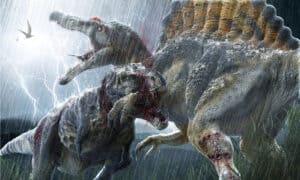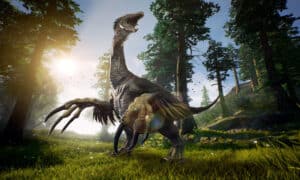Tyrannosaurus rex was a large, deadly theropod dinosaur with incredibly powerful jaws, long teeth, a massive head, and hilariously short arms. T. rex was still around in Cretaceous Period when terrestrial dinosaurs were wiped out by an asteroid impact. Long before that, T. rex’s ancestor roamed the land, hunting other creatures with longer arms than T. rex and deadly claws. Learn about this smaller cousin of T. rex and see when it lived, where it was found, and how it compares to other theropods.
What Was T-Rex’s Ancestor?
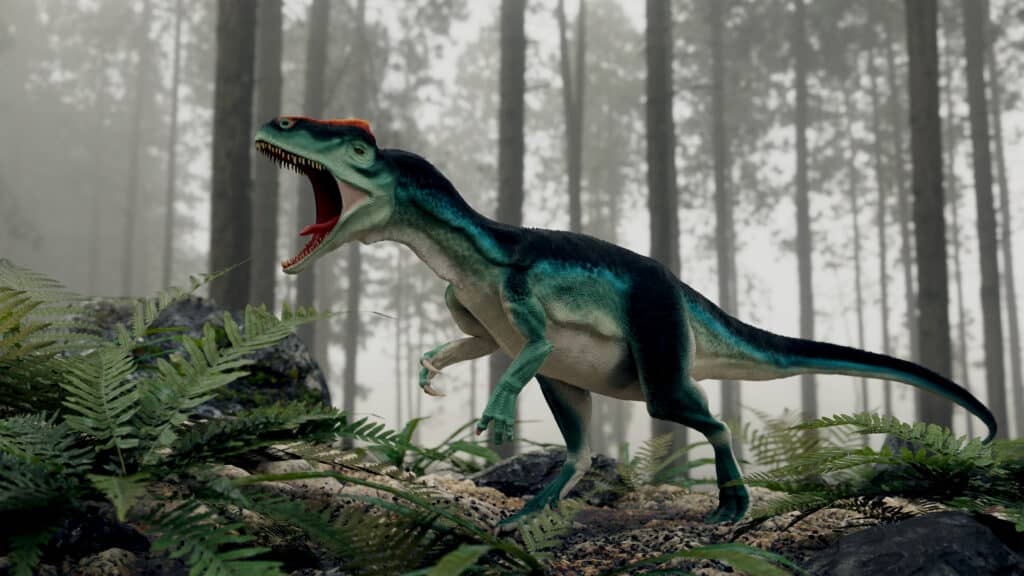
Allosaurus was a long, slightly built dinosaur.
©Lord Beard/Shutterstock.com
Long before T. rex appeared in the Late Cretaceous, a lighter, somewhat smaller genus of related reptiles roamed the planet, and they were called Allosaurus. Like the tyrant lizard, Allosaurus fragilis was a large carnivorous theropod that walked on two legs.
These bipedal reptiles had long, powerful tails, powerful hindlimbs, and relatively small forelimbs. However, those forelimbs were still longer than most other theropod arms. The dinosaur’s forelimbs ended with three-fingered hands with claws that measured up to 6 inches in length or more!
These dinosaurs stood about 16.5 feet tall, about 23 to 35 feet long, and weighed about 4,600 pounds. However, scientists continue to debate the size of these dinosaurs. Some of the specimens used for the examination have turned out to be other species entirely and some measures are based on extrapolating from sub-adult fossils.
Allosaurus translates to “different lizard.” Yet, the species is not all that unique even when considering its long arms. Instead, its name comes from the fact that it had concave vertebrae. Still, Allosaurus continues to be a subject of interest in the paleontological community because of the number of high-quality fossils recovered.
How Was Allosaurus Different from T. rex?
To be clear, although Allosaurus is often presented as T-rex’s ancestor, they’re not directly related. Still, they had similar body shapes so they’re often presented as relatives. T-rex was taller, longer, and much heavier than Allosaurus. The average T-rex weighed about 11,000 to 15,000 pounds, stood between 12 and 20 feet tall, and grew upwards of 40 feet long.
Allosaurus had longer limbs and much longer claws than T-rex, but T-Rex had much longer teeth, a more powerful bite, and more powerful legs.
Also, T. rex would absolutely beat Allosaurus in a fight. T. rex had the size, weight, and tools to take down the smaller creature, even if it had longer arms and claws.
Was Allosaurus the Largest Theropod?
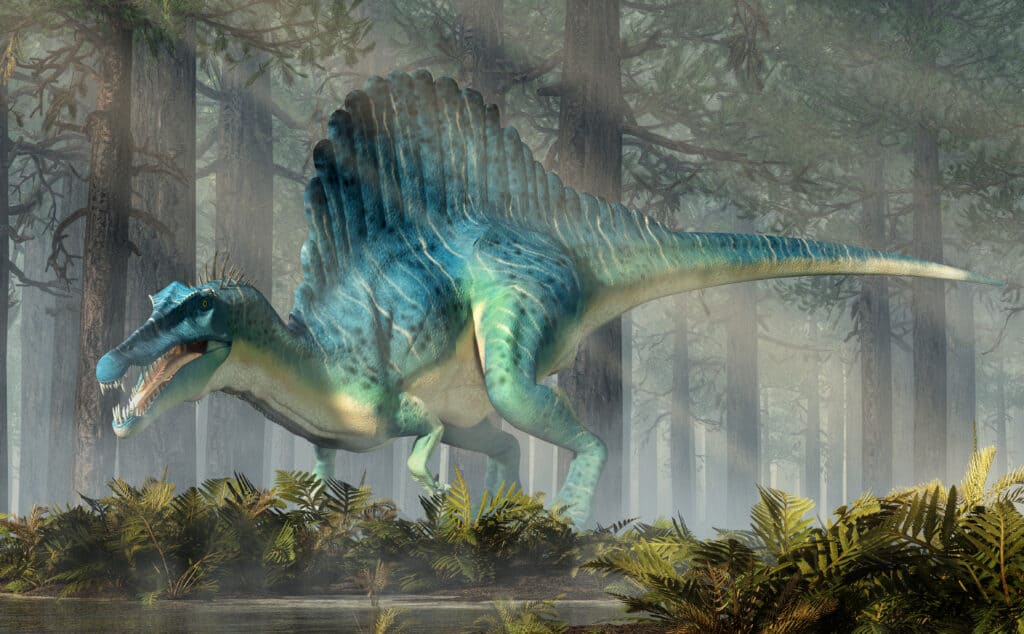
Spinosaurus was the largest theropod ever discovered.
©Daniel Eskridge/Shutterstock.com
No, Allosaurus was not the largest theropod. In fact, it wasn’t an especially large theropod, and it wasn’t anywhere near the top five largest theropods. Currently, scientists believe that the title of the heaviest theropod belongs to Spinosaurus aegyptiacus. This massive dinosaur weighed about 31,000 pounds, stood 23 feet tall including its spine, and grew up to 60 feet long!
Many other large theropods would also appear on a list of the largest before the Allosaurus. For example, Giganotosaurus, T. rex, and Mapusaurus were all heavier than the “different lizard”.
When Was Allosaurus Alive?
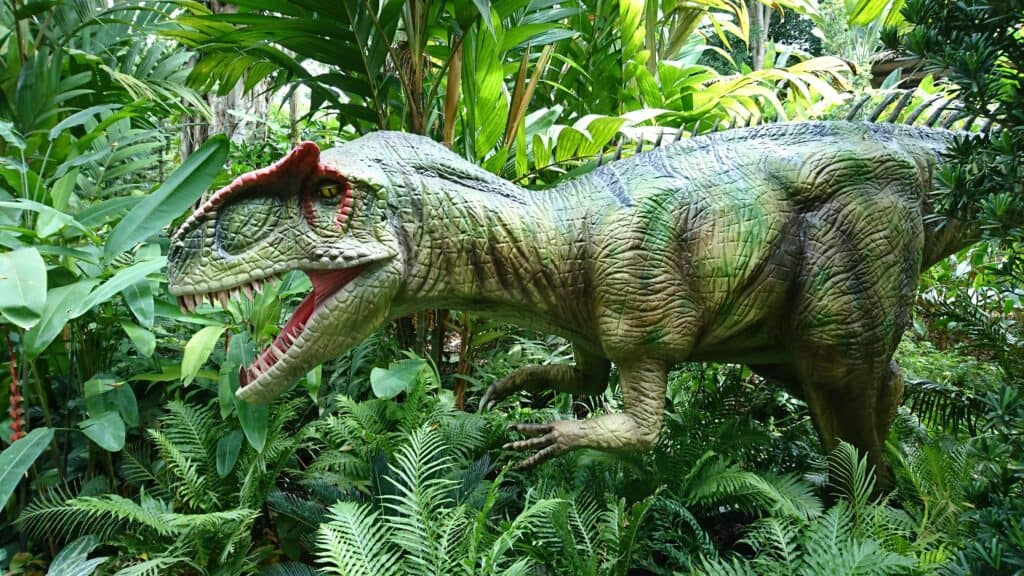
lived at the end of the Jurassic Period.
©Cheng Wei/Shutterstock.com
Allosaurus lived at some point between 155 and 145 million years ago. This falls within the Late Jurassic era. T. rex lived about 90 to 66 million years ago. That means Allosaurus and T. rex never roamed the planet at the same time. They were separated by at least 55 million years.
Allosaurus fossils were first discovered in 1869 in an area near Granby, Colorado. The bones were not discovered by a trained paleontologist but by locals that thought they were bones from a horse. The fossils were assigned to the Poekilopleuron genus at first, and they were not properly identified for years.
In 1877, a famed paleontologist and one of the principal belligerents in the so-called Bone Wars named Othniel Charles Marsh obtained Allosaurus fossils. He provided the species name Allosaurus fragilis.
Several fossils in great condition have been recovered since the initial discoveries. Many of the most significant discoveries were pulled from the Morrison Formation. This geological formation contains many fossils from the end of the Jurassic Period.
Scientists have recovered fossils of Allosaurus in places like Colorado, Wyoming, Utah, and more. However, the fossils don’t provide as much information as people would like.
How Did T-Rex’s Ancestor Go Extinct?
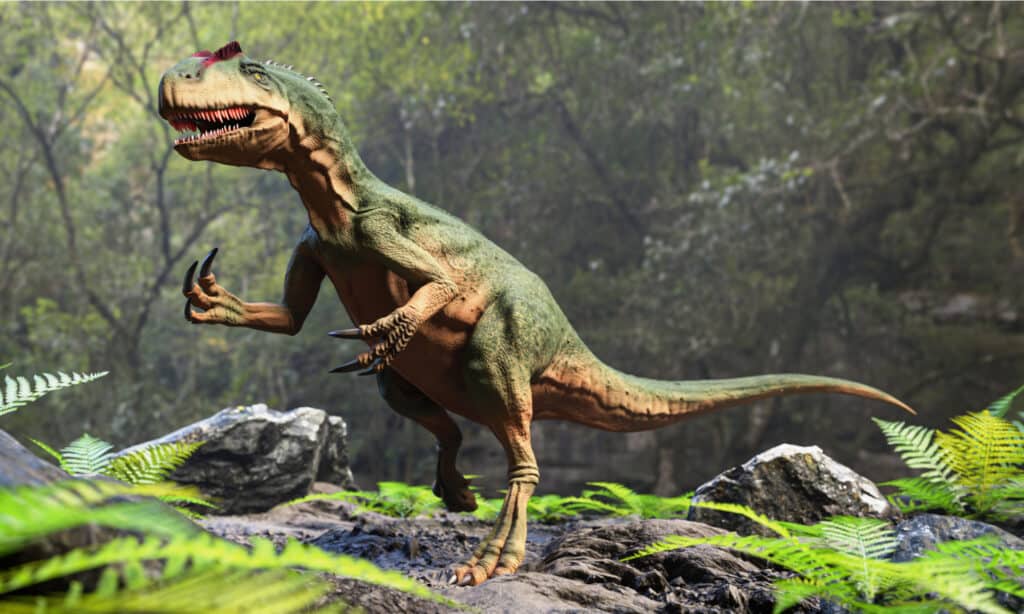
The changing environment and competition for food probably contributed to the demise of Allosaurus.
©MattLphotography/Shutterstock.com
One thing that scientists don’t know about the Allosaurus genus is why it went extinct. Unlike the end of other epochs, no ongoing, major extinction event punctuated the end of the Jurassic Period. Nevertheless, scientists have come up with some theories about what happened to this dinosaur.
Environmental changes could have driven the members of the genus to extinction. Droughts, volcanism, and a change in food availability could have spelled the end for the T. rex’s ancestor. Other potential causes of death have also been inferred. For one thing, the famous Big Al fossil shows a creature that suffered from diseases and infections.
The population could have dwindled if a bad enough disease spread through the groups of Allosauruses. Another potential Allosaurus killer was competition with other dinosaurs. Other predators could have evolved and been more suited to killing prey than Allosaurus. Unable to efficiently kill prey like newer dinosaurs, evolution would have pruned the genus.
Finding Fossils of Allosaurus
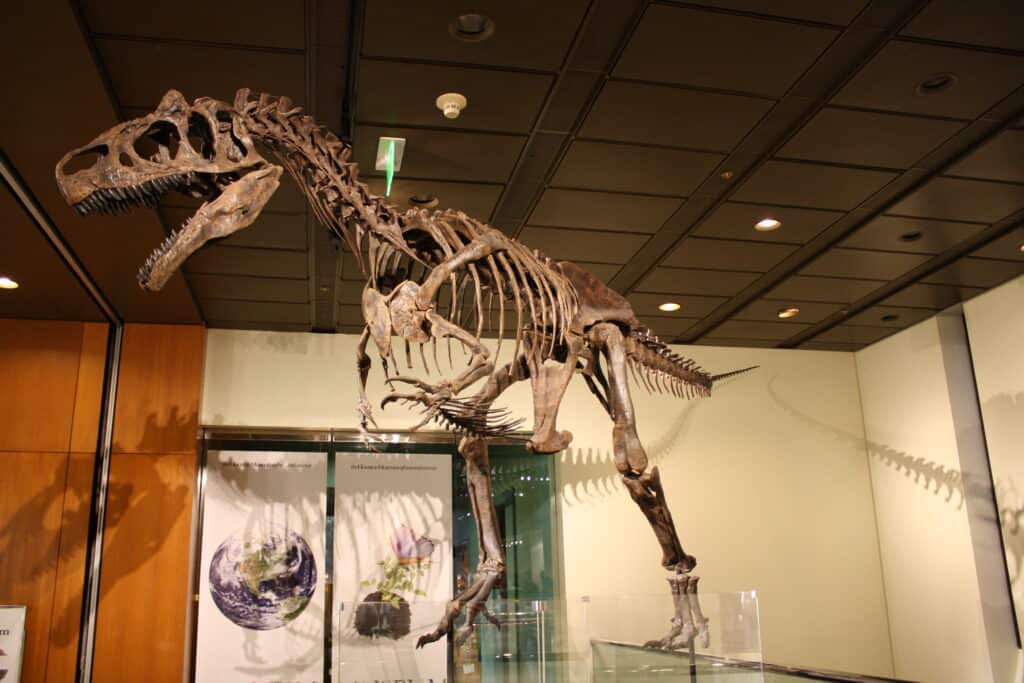
(Big Al II) was discovered in the Morrison Formation
©andytang20 / Flickr – License
Several fossils of Allosaurus are on display for people that want to see this dinosaur. One of the best and most famous displays of this creature can be found at the Smithsonian National Museum of Natural History.
People interested in seeing Allosaurus can also find displays of the dinosaur at the American Museum of Natural History in New York and the Denver Museum of Nature and Science.
If you want to see the fossil of Big Al, you can go to the Museum of the Rockies in Bozeman, Montana. Several other museums, including the University of Wyoming Geological Museum in Laramie, Wyoming have casts of Big Al on display.
All told, T. rex’s ancestor was not the largest or most powerful dinosaur. Still, it was a very intriguing creature during the time it lived. The quality of the fossils alone should make people want to see more of this dinosaur.
The photo featured at the top of this post is © Daniel Eskridge/Shutterstock.com
Thank you for reading! Have some feedback for us? Contact the AZ Animals editorial team.



